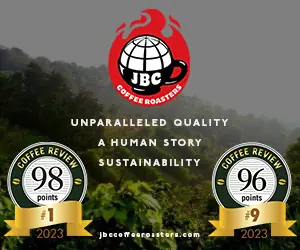Guatemala is a tease of a coffee origin in sensory terms. It would be very difficult in a blind cupping to pick out any of the coffees we reviewed this month with absolute certainty as Guatemalas if they were mixed in with, say, other Central Americas. Yet all twelve of this month’s samples clearly share certain quiet but pervasive commonalities: balanced acidity (seldom overbearing or sharp), smooth and usually full mouthfeel, with aromatics that emphasize the softer, sweeter side of citrus (orange rather than lemon), usually with a hint of flowers, usually complicated by nut or cocoaish chocolate.
These characteristics tend to be expressed with particular purity and grace in the finest coffees of the Antigua valley, where well-defined seasons and benign terroir encourage uniform and sugary ripening of the fruit and where well-established, old-fashioned farms perform fruit removal and drying in a meticulously old-fashioned way. All of this means that variations on the subtle but pervasive Guatemala character seem to be expressed with a particular soft clarity in the four Antiguas reviewed here. Similar quietly distinctive profiles popped up elsewhere, however, in the respected Huehuetenango region and in two excellent coffees from Palencia, northeast of Guatemala City.
Cooperatives and Comebacks
Another glory of Guatemala represented in this month’s reviews is coffee produced by cooperatives of small-holding (often indigenous) farmers. Three such coffees are reviewed here, two displaying a less delicate but more robustly pungent, dark-chocolaty version of my proposed Guatemala profile, including the standout Conscious Coffee Organic Guatemala (93) from the Rio Azul Cooperative in Huehuetenango.
For the first time in several seasons a fine cooperative coffee from the spectacularly beautiful Lake Atitlan basin turned up, the 91-rated San Pedro La Laguna from Kaldi’s Coffee. This region took a horrifying hit from Hurricane Stan in 2005. Mudslides literally swept away entire coffee mills and coffee-growing communities. It is wonderful to sample a fine cooperative coffee from this region again, though storms, floods and mudslides continue to torment Guatemala coffee growing regions, as evidenced by one of the most destructive rainy seasons in history in 2010.
Variety and Bourbonosity
The standout of this month’s cupping, the Temple Coffee Hunapú Antigua (97), expressed with an almost startling lushness and lyric purity the sensory potential of the heirloom Bourbon variety of Arabica.
The generalization is often made that the subtle distinctiveness expressed by many Guatemala coffees is owing to the fact that older varieties of Arabica were not replaced by newer varieties owing to the continuous upheavals of Guatemala’s long civil war (1960 to 1996). There is probably considerable truth to this contention, though it is difficult to speculate on how much variety directly contributed to the sensory profile of most of the samples reviewed here, given that typically two or three different varieties were listed as potentially contributing to the same sample.
Furthermore, of the three varieties most grown in Guatemala – Bourbon, Caturra and Typica – only Bourbon is potentially recognizably different or distinctive in cup character. Although Typica is a very old variety, about as “heirloom” in that respect as coffee varieties get, it does not in my experience produce a particularly distinctive-tasting cup. Caturra is a selection of Bourbon, a compact-growing or dwarf variety with agronomic advantages, but it is not especially distinctive either.
Bourbon is distinctive, or at least it can be. Regrettably, all coffees from trees of the Bourbon variety in a given crop year do not appear to clearly express the Bourbon character (or “Bourbonosity” as Andy Newbom of Barefoot Coffee once called it). Varietal character can be stronger or weaker depending on the many confounding variables affecting a given lot of coffee: how the trees naturalized in the first place, the weather patterns that impact a given crop year, the point in the harvest when the coffee making up the sample was picked, accidents of drying and processing, etc. A particularly baffling instance of this inconsistency surfaced in this month’s cupping in the form of a sample (not reviewed here) purportedly containing the same green coffee (same farm, same variety) as the 97-rated Temple Bourbon, yet which displayed almost none of the extravagant Bourbon character of the Temple sample.
2010 The Coffee Review. All rights reserved.










